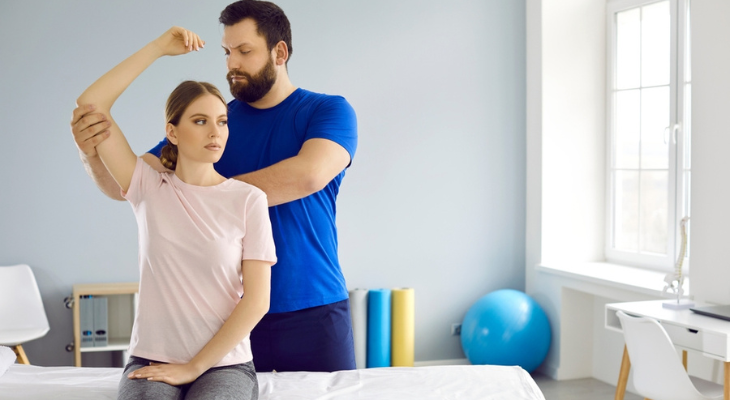
Chiropractors and Osteopaths: The Key Difference Between Them
It's not always easy to decide which healthcare professional to see when you're in pain. Although both chiropractors and osteopaths treat muscle and joint pain, treatment approaches do differ.
Education
Osteopaths attend a four-year school of osteopathic medicine after receiving an undergraduate degree. Classes focus on the musculoskeletal system in addition to traditional medical school classes. Upon graduation, students are awarded the Doctor of Osteopathic Medicine (DO) degree. Their hands-on education continues during multi-year residencies and fellowships following graduation. Residencies allow the doctors to specialize in a particular area of medicine, such as family practice, internal medicine, surgery or obstetrics/gynecology.
Chiropractors may attend chiropractic school after receiving an undergraduate degree or after completing 90 credit hours or three years of undergraduate studies. The Association of Chiropractic Colleges notes that 24 of those hours must be earned in physical or life sciences. Completing chiropractic school takes three to four years, depending on the school. Students take classes in anatomy, physiology and chemistry, in addition to learning how to perform chiropractic treatments. During the final year of the program, students usually work exclusively with patients. New chiropractors receive the Doctor of Chiropractic (DC) degree when they graduate.
Treatment Scope
Osteopaths believe that all systems of the body are connected. The osteopathic manipulative treatments (OMT) DOs learn during medical school relieve muscle and joint pain and treat asthma, migraines, menstrual problems, fibromyalgia, digestive disorders and other conditions.
DOs also provide the same type of treatment options as medical doctors. Depending on their specialty, osteopaths can treat the flu, determine the cause of your heartburn, deliver your baby, or remove your appendix. They use holistic diagnostic methods that consider the whole person rather than just a specific system or body part.
Chiropractors focus on issues that affect the bones, muscles and joints and frequently treat back and neck pain. Although chiropractors can't prescribe medications or perform surgery, they also focus on holistic medicine. In fact, some common symptoms, such as indigestion or frequent illnesses, could actually be related to subluxation (misalignments) of the spine. Realigning the vertebrae with spinal manipulation, a common chiropractic treatment, not only eases pain, but can help improve health by reducing pressure on the nerves that control organs and systems.
Procedures
OMT and chiropractic treatments both involve hands-on treatments, although the techniques used for these therapies differ. Among the treatments an osteopath may use are:
- Muscle Energy Technique. During this technique, the patient tenses a muscle while the osteopath provides resistance. Muscle energy technique increases joint mobility and eases pain and stiffness.
- Strain-Counterstrain Technique. Strain-Counterstrain relieves soft muscle spasms. This technique involves placing the body part in a position that relaxes the muscle and stops the spasm.
- Indirect Treatment. Indirect treatment relaxes tight tissues by moving them through three planes of movement.
Both chiropractors and osteopaths use massage to relax tight muscles and high velocity/low amplitude techniques to realign vertebrae. Called "spinal manipulation," by chiropractors, the treatment involves quick, hands-on thrusts that move the vertebrae back into place.
Chiropractors also offer several other treatments, including:
- Flexion-Distraction. Flexion-distraction is performed on a special moving table. Table movements combined with hands-on treatments decompress your spine. The therapy is helpful for chronic back pain and stiffness. It's often used to reduce herniated disc bulging and relieve pressure on spinal discs and nerves.
- Ultrasound Therapy. A handheld ultrasound device produces sound waves that heat and relax deep tissues, relieve pain and inflammation, and increase circulation.
- Traction. Traction uses gentle pressure to stretch the spine. The chiropractor may use his or her hands to provide the therapy or use a traction table. Traction relieves pressure on nerves, tissues and spinal discs and eases head and neck pain.
- Transcutaneous Nerve Stimulation (TENS). A gentle electrical current passes through electrodes attached to the skin and prevents pain signals from reaching the brain during this treatment.
Treatment Availability
Although osteopaths can provide OMT, many of them don't use the treatment on a regular basis, according to a 2018 survey of osteopathic physicians conducted by the American Osteopathic Association. Seventy-seven percent of the doctors who responded said they used the techniques on fewer than 5% of patients. Fortunately, hands-on treatments are readily available at chiropractic offices.
Bothered by joint pain, stiffness, muscle sprains and strains, or frequent headaches? Chiropractic treatment relieves these painful conditions naturally. Call us to schedule an appointment with the chiropractor.
Sources:
American Association of Colleges of Osteopathic Medicine: About Osteopathic Medicine
https://www.aacom.org/become-a-doctor/about-osteopathic-medicine
WebMD: DOs, Chiropractors, and MDs: How They’re Different, 5/4/2022
https://www.webmd.com/pain-management/osteopathic-versus-md-chiropractor
SPINE-Health: Chiropractic and Osteopathic
https://www.spine-health.com/treatment/chiropractic/chiropractic-and-osteopathic
Journal of Osteopathic Medicine: Osteopathic Manipulative Treatment (OMT) Use Among Osteopathic Physicians in the United States, 1/1/2021
